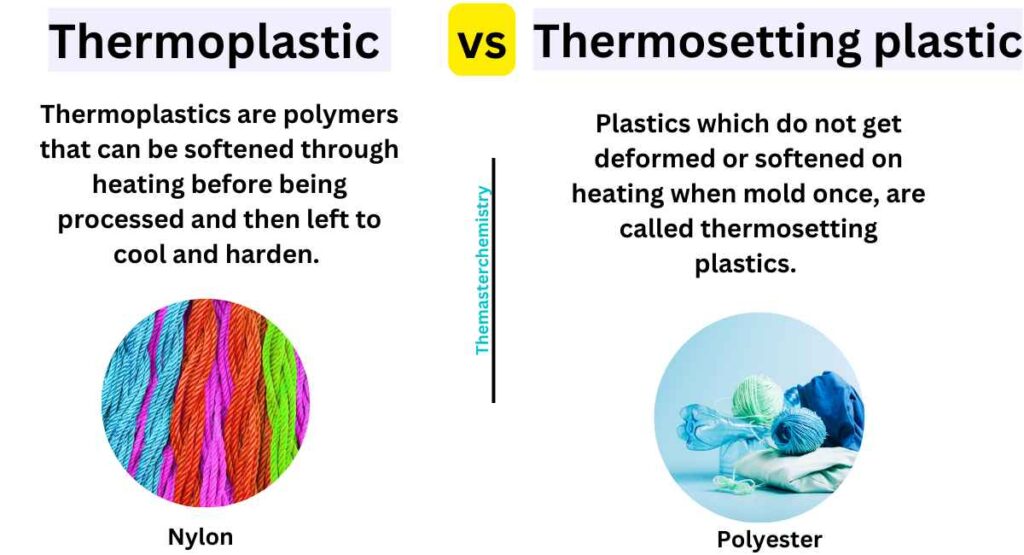LEARNING OBJECTIVES
In this article, the author has explained 9 Difference Between Thermoplastic and thermosetting plastic.
The main difference between thermoplastics and thermosetting plastics is the difference of their behavior during the curing process. Thermosetting plastics form chemical bonds during curing, resulting in irreversible rigidity, while thermoplastics do not form chemical bonds, allowing for remolding and recycling.

Also read
Thermoplastic vs Thermosetting Plastic Table
Here is a table summarizing the differences between thermoplastic and thermosetting plastic:
| Difference | Thermoplastic | Thermosetting Plastic |
|---|---|---|
| Shape after curing | Can be remolded | Irreversible, cannot be remolded |
| Production process | Made from petroleum | Derived from other chemicals like coal tar or limestone |
| Physical properties | Highly resistant to heat and chemicals | Less chemically stable |
| Recyclability | Can be recycled an unlimited number of times | Limited recyclability |
| Restoration to original state | Easily restored | Requires the use of strong chemicals |
| Coloring | Easily colored | Low ability to accept dye molecules |
| Types | Acrylics, polystyrene, PVC, ABS | Phenolic, urea-aldehyde, epoxy |
| Flexibility and brittleness | More flexible, can break under stress or abuse | More brittle, can break under heat or stress |
| Production process | Metal mold | Compression molds or injection molding processes |
9 Differences between Thermoplastic and thermosetting plastic
- The main difference between thermoplastic and thermosetting plastic is how permanent their shape is after it has been cured; thermoplastics can still be remolded after being cured whereas thermosets cannot!
- The second difference between thermoplastic and thermosetting plastic is the production process. Thermoplastics are made from petroleum while thermosets come from other chemicals such as coal tar or limestone, which is a natural resource!
- The third difference between thermoplastic and thermosetting plastic is the physical properties each type of plastic has. Thermoplastics are highly resistant to heat and chemicals, while thermosets tend to be less chemically stable than thermoplastics.
- The fourth difference between thermoplastic and thermosetting plastic is what happens when you try to recycle them! Most plastics can only be recycled once or twice before they are no longer suitable for recycling; however, thermoplastics can be recycled an unlimited number of times!
- The fifth difference between thermoplastic and thermosetting plastic is the ability to return it back to its original state after being remolded. Thermoplastics can do this easily because their molecules are mobile whereas in order to remold thermosets, you would need to use strong chemicals like sulfuric acid!
- The sixth difference between thermoplastic and thermosetting plastic is the ease of coloring the plastics. Thermoplastics can be colored easily, while thermosets have a low ability to accept dye molecules because they are so large!
- the seventh difference between thermoplastic and thermosetting plastic is their different types. The most common thermoplastics include acrylics, polystyrene, PVC and ABS; while the most common thermosets include phenolic, urea-aldehyde and epoxy!
- the eighth difference between thermoplastic and thermosetting plastic is their physical properties. Thermoplastics tend to be more flexible than thermosets; however, they can break when exposed to stress or abuse. On the other hand, these plastics tend to be more brittle than thermoplastics and can break when exposed to heat or stress.
- the ninth difference between thermoplastic and thermosetting plastic is the process used for producing them! Thermoplastics are produced using a metal mold whereas most thermosets are made using compression molds or injection molding processes.